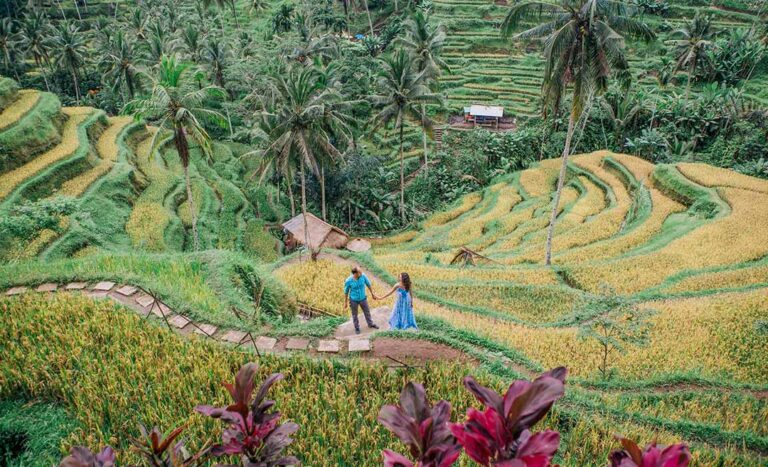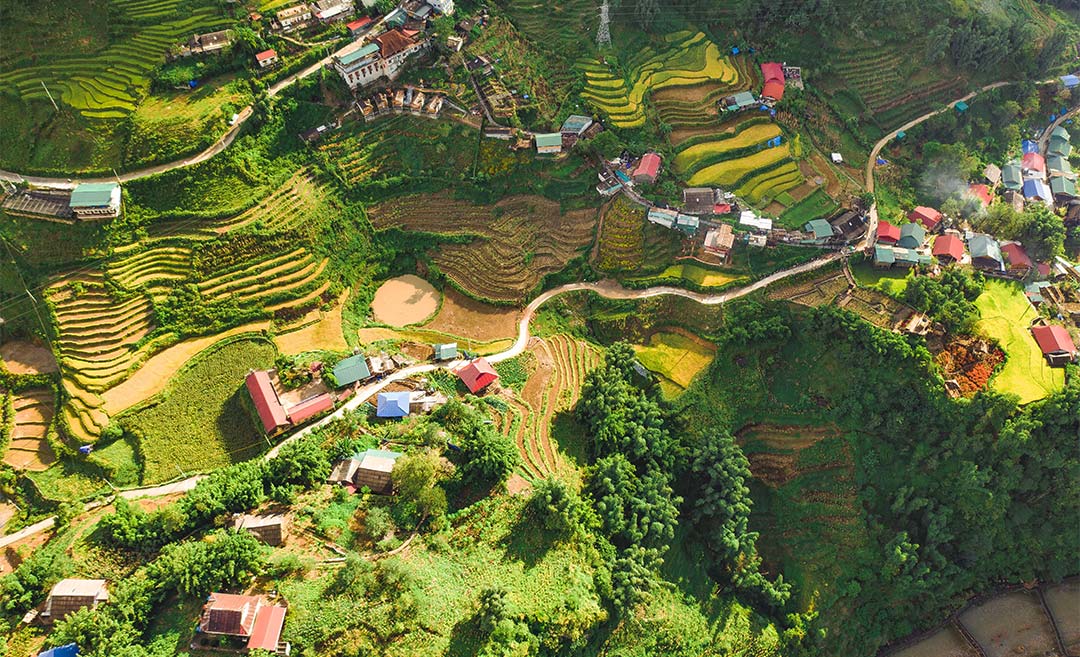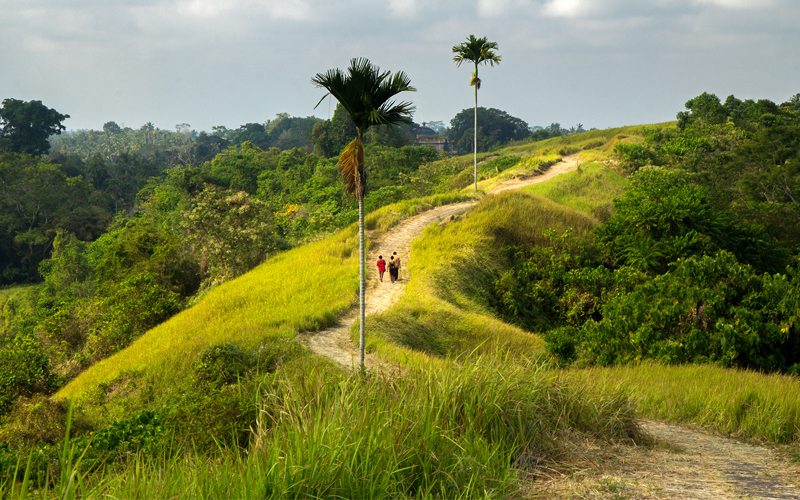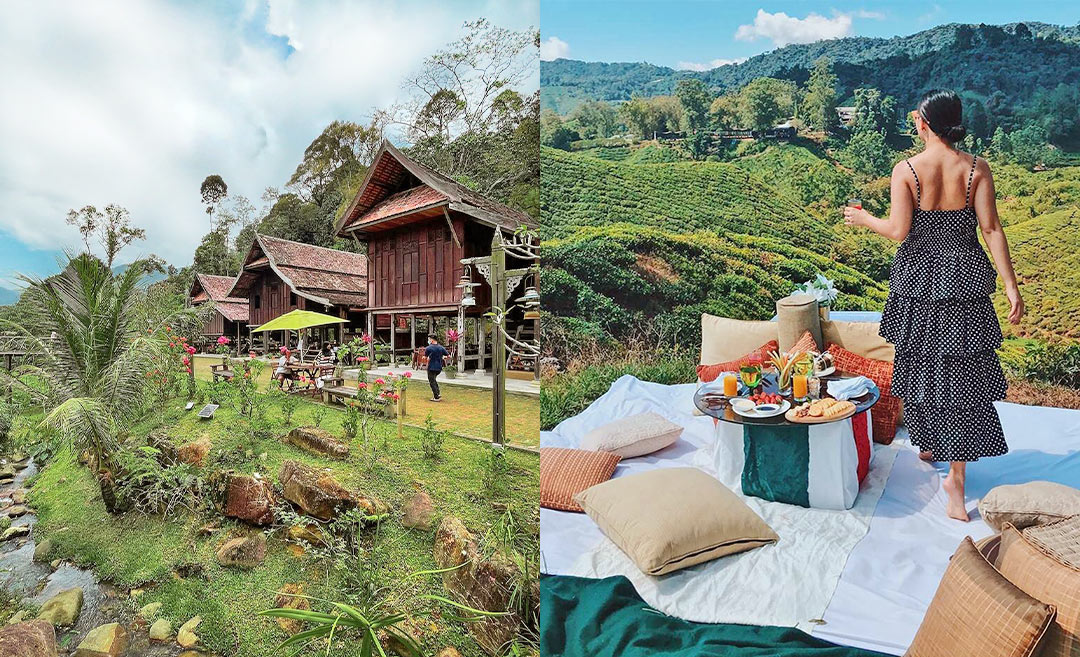Ah, rice, the staple on most of Asia’s dining tables. As Malaysians, we have rice for at least one meal a day—if not all. We also have a state nicknamed ‘The Rice Bowl of Malaysia’ (Kedah). The prominence of this food item in our diet cannot be denied. What better way to celebrate rice than by visiting the rice terraces of Asia?
Pack comfortable shoes and mosquito repellent, and be prepared to walk uphill! We promise you’ll bring home with you not just beautiful photos but also admiration for the local rice farmers’ dedication to sculpting these terraces and keeping the tradition alive.
1. Tegallalang, Indonesia
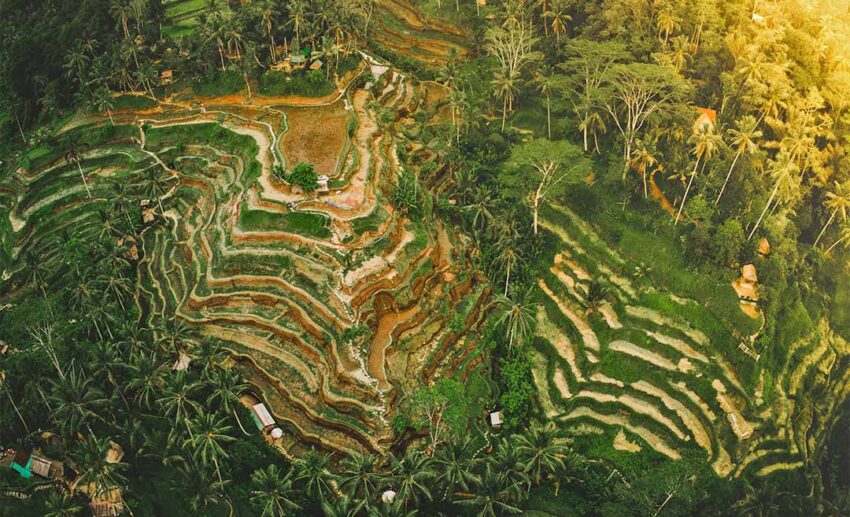
This list would be incomplete if we did not include THE most famous rice field in Bali—the Tegallalang Rice Terrace. Surrounded by verdant forests and encased in a valley, it’s no wonder the views here are stunningly breathtaking.
Listed as a UNESCO World Heritage Site, the rice paddies here are arranged in the traditional Balinese irrigation system called ‘subak‘. Visitors can sip coffee at the cafes in the area and take Insta-worthy photos on the swings.
2. Sapa, Vietnam
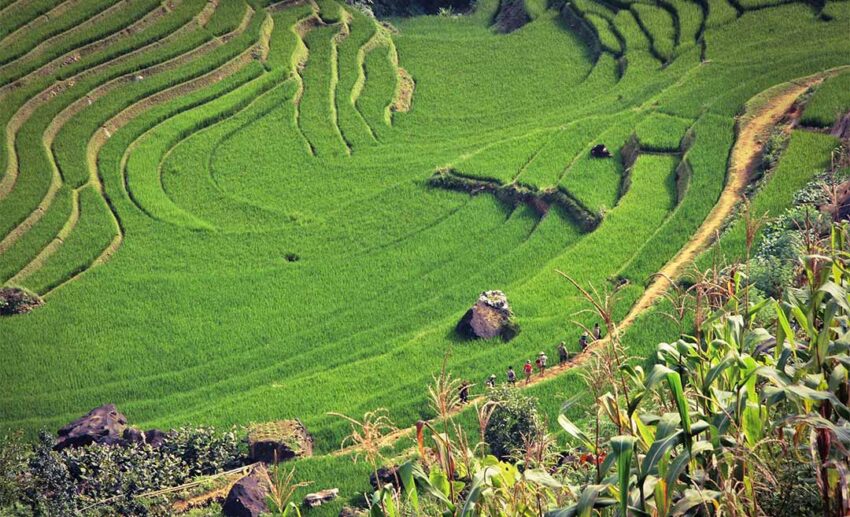
The hilly town of Sapa is home to several indigenous hill tribes who dedicate their lives to the rice terraces. With year-round cool weather, you can visit several villages with rice terraces in Sapa town—all with their own distinct charm. Here are some we recommend visiting: Cat Cat Village, Muong Hoa Valley, and Ta Phin Village.
3. Batad Rice Terraces, Philippines
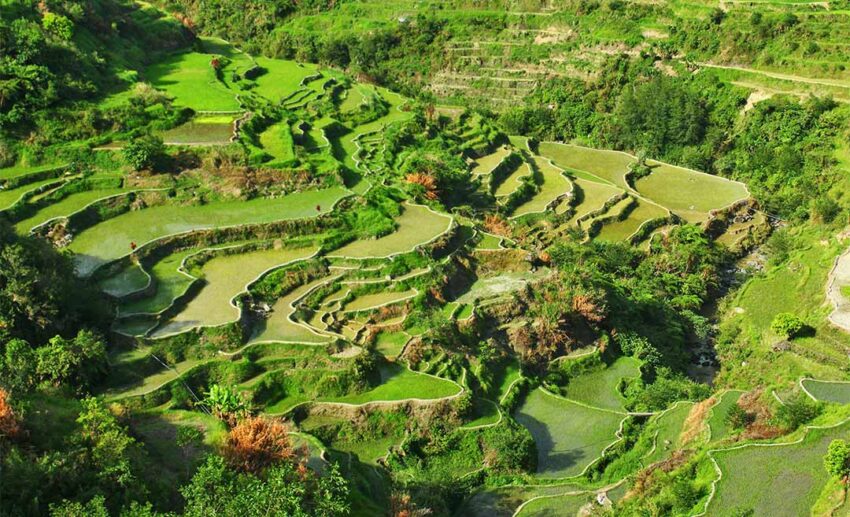
It’s a life-changing experience if you’re lucky enough to stand in the impressive rice terraces of Batad—let me explain why. These terraces were built 2,000 years ago with stone walls, and to imagine the number of mouths it has fed and the sheer amount of harvest throughout all the years is inspiring, to say the least.
You can reach this remote village by car or tricycle, stay in accommodations in Batad, or take a day trip from the nearby Banaue town.
4. Honghe Hani Rice Terraces, China
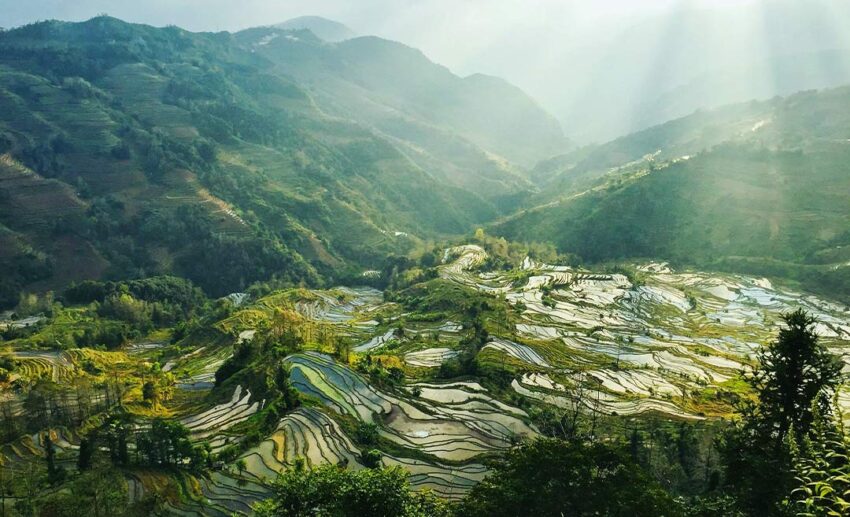
The vast Honghe Hani Rice Terraces in China span 1 million acres and four counties and have over 1,200 years of history. Visitors can get here from Xinjie Town, and the best areas for visiting are Laohuzui Rice Terraces, Duoyishu Rice Terraces, and Bada Rice Terraces.
These terraced fields have been and still are an important part of the Hani people’s culture. You’ll see their lovely mushroom-shaped homes dotted around the area as they continually live and maintain the rice-farming life.
5. Kampung Patau, Tambunan, Sabah, Malaysia
Of course, we have to include one from sunny Malaysia. While we do have rice paddies in West Malaysia, like Kedah and Sekinchan, this one in Sabah is vast and impressive. Not enough words can describe the beauty of these rice paddies gently sloping uphill, forming lovely contours.
6. Pa Pong Piang Rice Terraces, Thailand
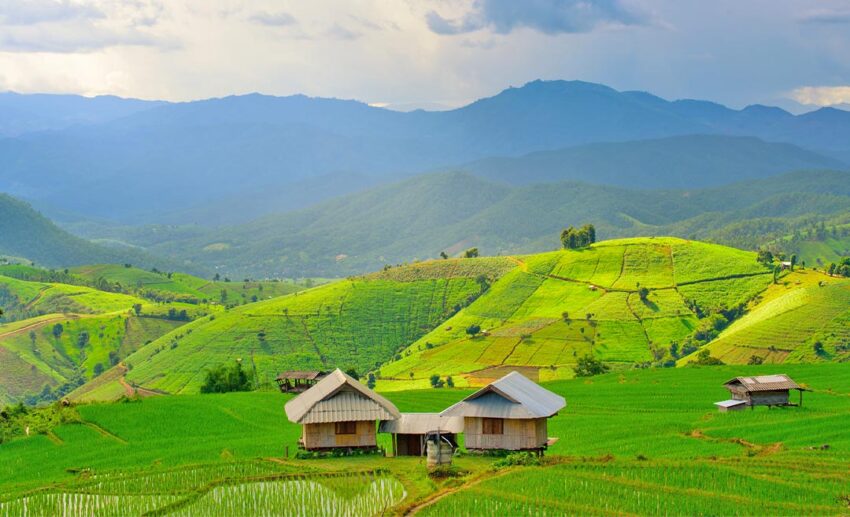
For a remote, off-the-grid travel experience, Pa Pong Piang Rice Terraces in Chiang Mai is the way to go. To get here, it’s a two-hour drive from Chiang Mai City and then a few kilometres of off-road driving on muddy trails.
Because of its remote location, accommodation options are limited to bamboo houses with simple bedding and mosquito nets. There will be no mobile phone signals, so you can truly disconnect and immerse yourself in the natural beauty of the rice terraces.
7. Maruyama Senmaida, Japan
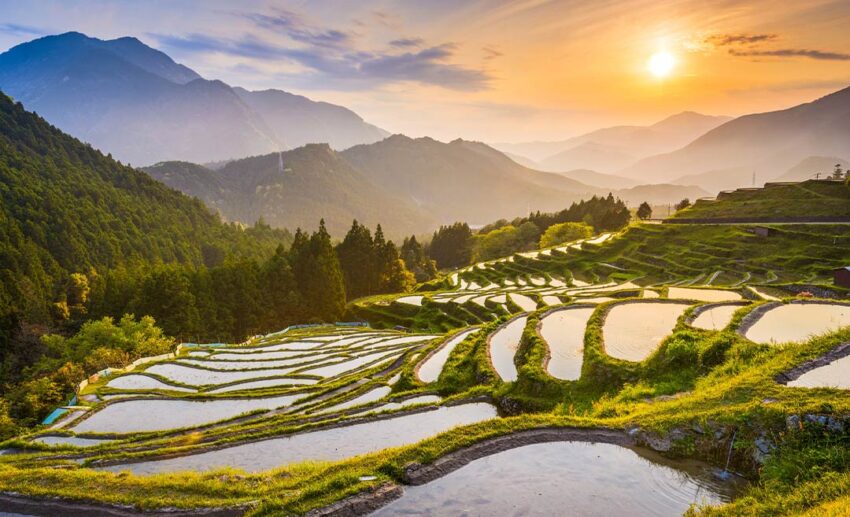
‘Sen Mai Da’ means ‘one thousand fields’. Being one of the largest rice terraces in Japan, the 1,340 rice paddies that are part of Maruyama Senmaida in Mie Prefecture are believed to date back to the Edo Period. These fields have been painstakingly constructed using stone and mud, angled conducive to catching the sun’s rays. When the rice paddies are filled with water, you’ll catch a mesmerising view of the sunlight shimmering on the water.
